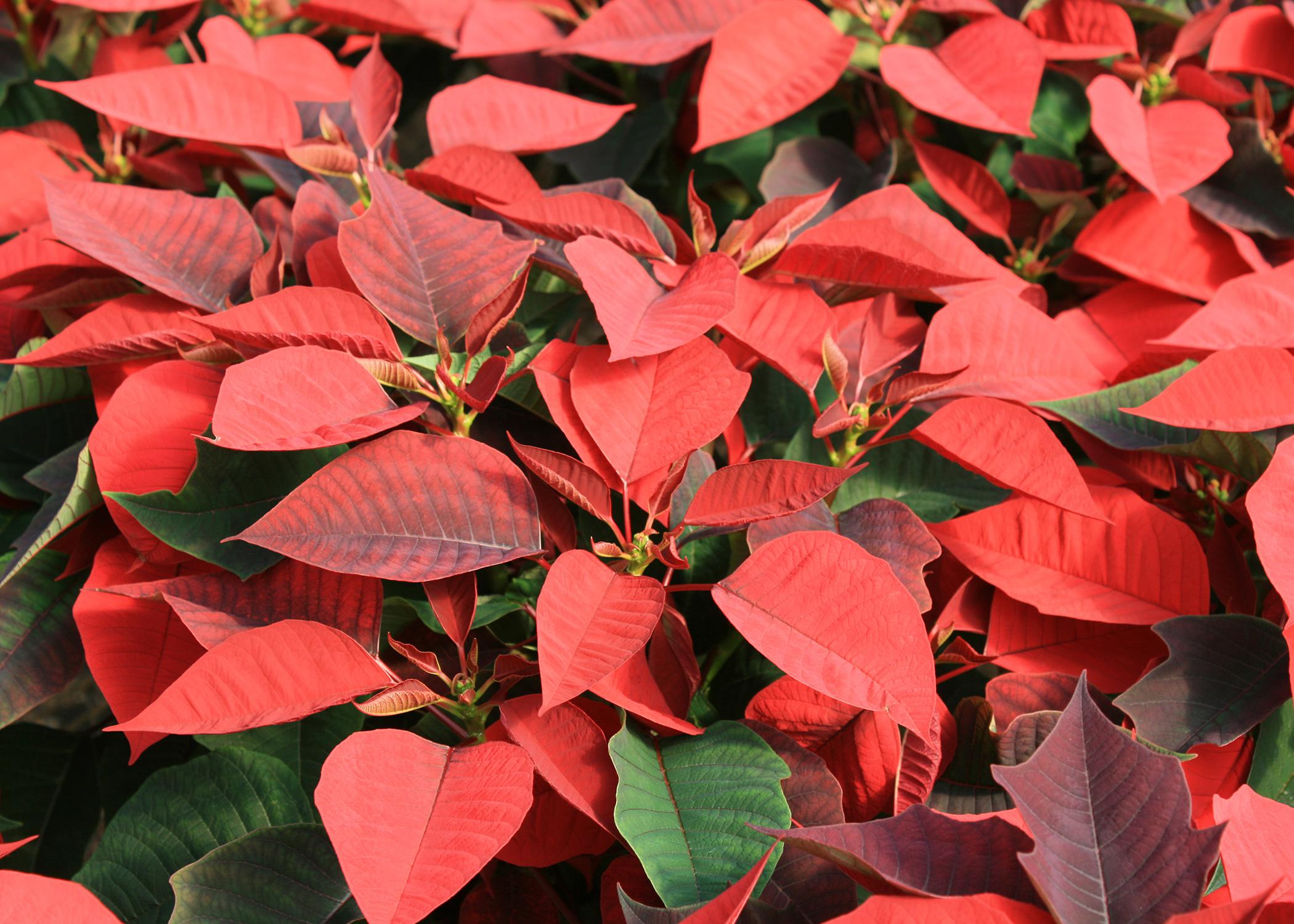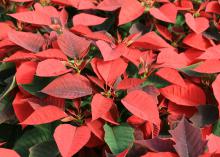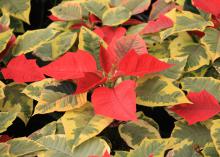Information Possibly Outdated
The information presented on this page was originally released on November 24, 2014. It may not be outdated, but please search our site for more current information. If you plan to quote or reference this information in a publication, please check with the Extension specialist or author before proceeding.
Pretty poinsettias make ideal Christmas accent
Although it seems like Christmas decorations have been in the stores since Labor Day, what really tells me it’s beginning to look like Christmas is when the poinsettias hit the garden centers.
Poinsettias may be the perfect plant for the Christmas season. In their native Mexico, the poinsettia’s bright red flowers of are known as Flores de la Noche Buena, or Flowers of the Holy Night, as they bloom each year during the Christmas season.
Poinsettias come in colors to fit almost any decoration scheme. There is the traditional bright red, but I really like the whites, pinks and marbled bicolors, too. There’s even maroon available to help celebrate the football success of the Mississippi State University Bulldogs. There are rose-flowered selections, and if that’s not enough, growers even paint them and add sparkles.
More growers and florists use poinsettias in combination containers. For many years, Southern Gardening has promoted combining the poinsettia with Mississippi Medallion winner Diamond Frost euphorbia. Both plants are in the euphorbia family and have similar care requirements. The contrasting poinsettia colors and the white Diamond Frost are really attractive.
One question I get every year involves the poinsettia’s “flowers,” which are actually modified leaves called bracts. The true flowers are yellow-green, bead-like structures called cyathia. Your poinsettia will last longer if you select a plant with unopened or partially opening cyathia. You can even carefully remove these structures for longer lasting color.
When poinsettia shopping, don’t be tempted to grab the first plants you see. Take your time to find that perfect plant. Poinsettias are fragile, and the stems are brittle. Even with careful handling at the greenhouse, stems can be broken when the sleeves are put on, and the damage may not be readily noticeable.
Pay attention when removing the paper or plastic sleeves that can hide damage. Never try to slide the shipping sleeves off because you could damage the plant. Always carefully tear or cut the sleeve off.
One of the most widely reported urban legends at this time of year is that poinsettias are poisonous to our pets. This is not the case.
According to Animal Poison Control at the American Society for the Prevention of Cruelty to Animals, if your pet chews on or eats some poinsettia leaves, it will induce only GI tract irritation. No ornamentals or houseplants are meant to be eaten by our animals, so try to keep the poinsettia out of your pet’s reach.
Some humans, myself included, may be sensitive to the milky, latex sap in the poinsettia, which can cause a skin rash or contact dermatitis. To prevent this problem, always wash your hands thoroughly after handling a poinsettia.
To help keep your poinsettia looking good long after the Christmas holidays, make sure it gets at least six hours of indirect sunlight a day, and keep it at a comfortable room temperature. If you’re comfortable, your poinsettias will be, too.
Don’t let the leaves or bracts touch the window glass as the cold outside will transfer through the glass and hurt the plant. Poinsettias look great by the front door when guests arrive, but to keep them looking good, avoid the sudden temperature changes from drafts as the door is opened.
Be sure to brighten your Christmas celebrations with several of your favorite poinsettias.




